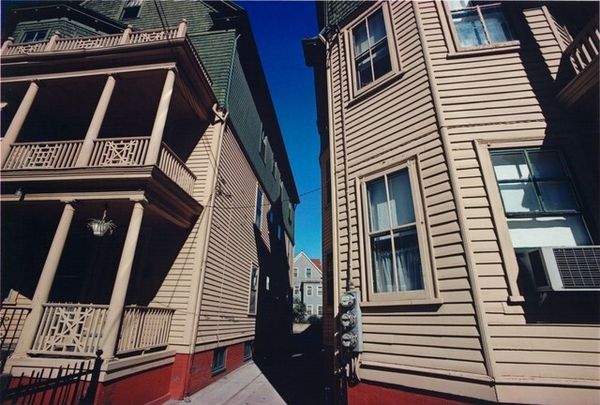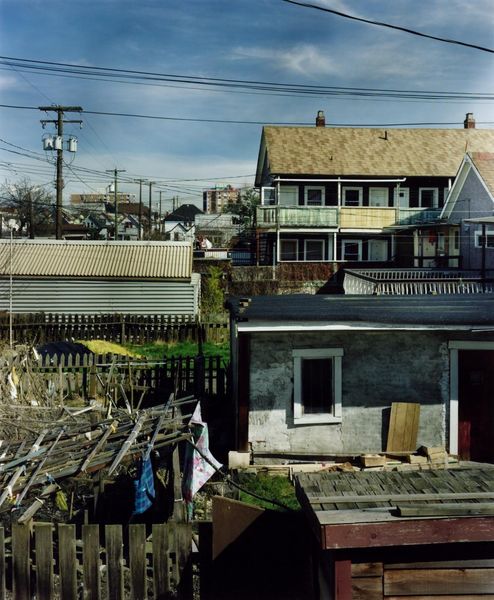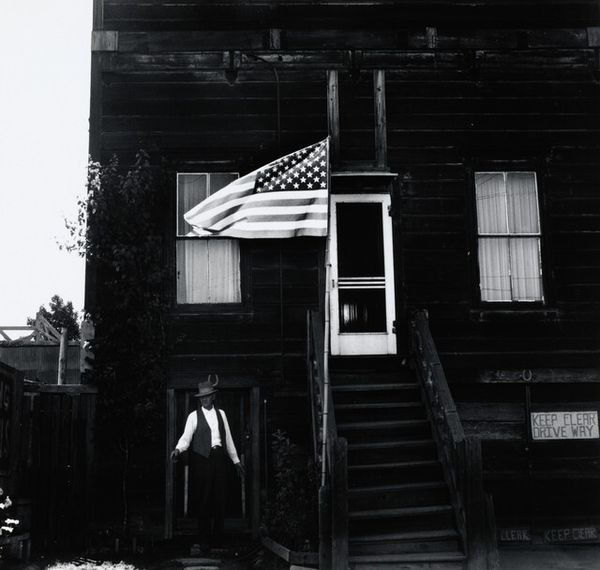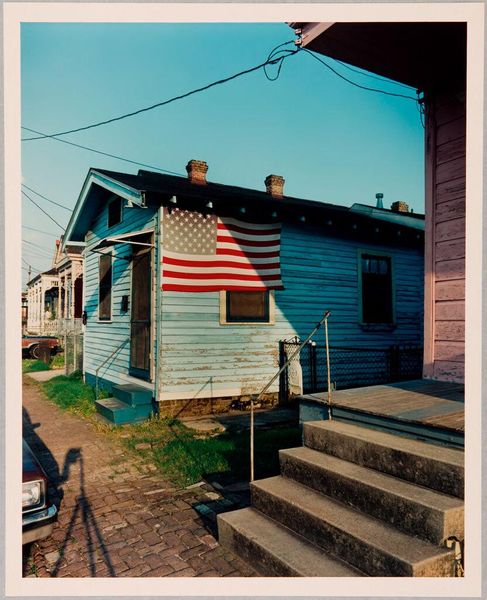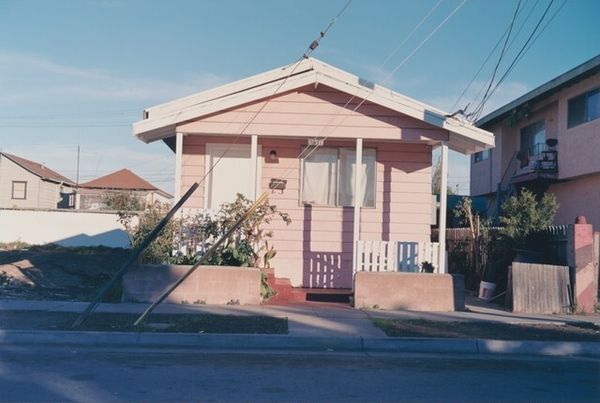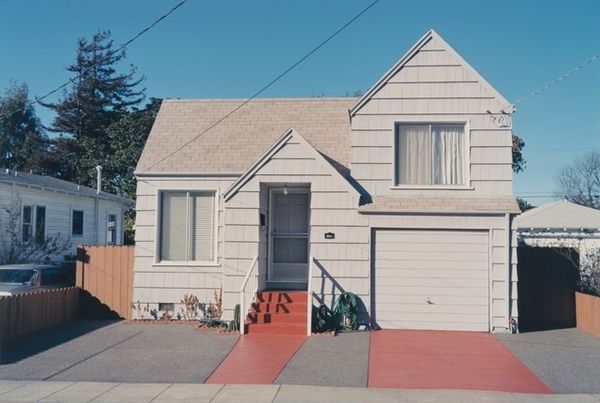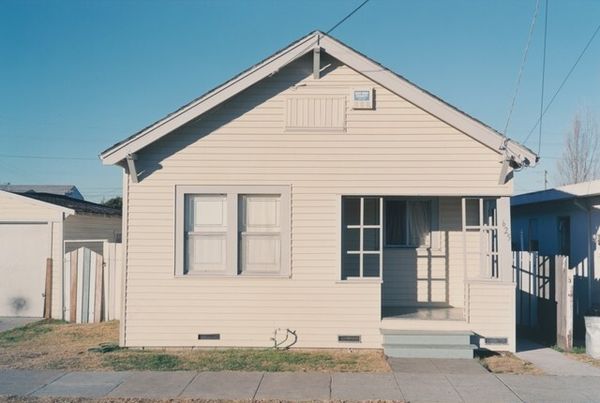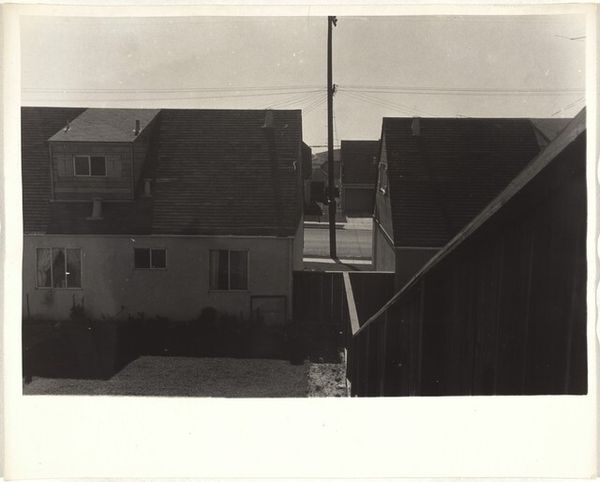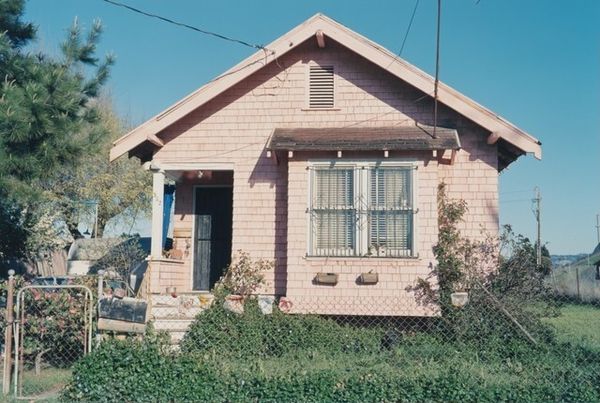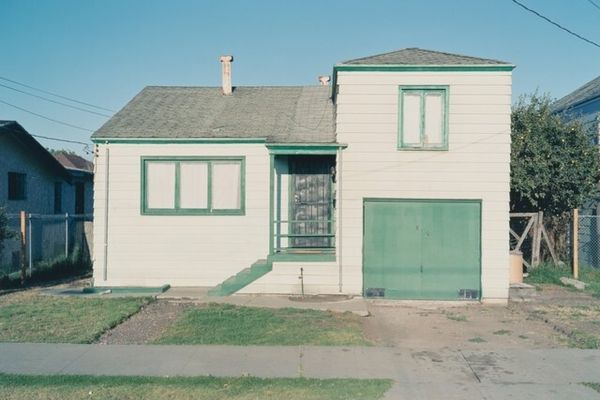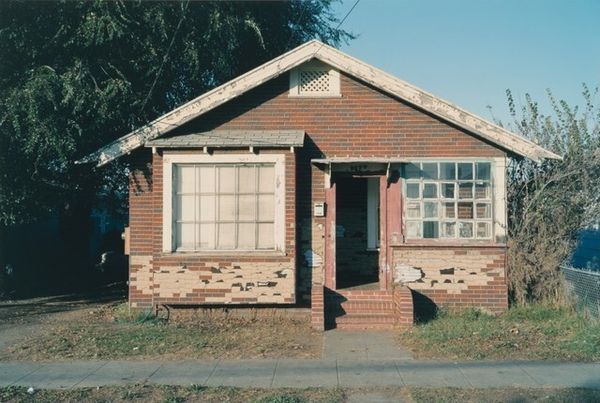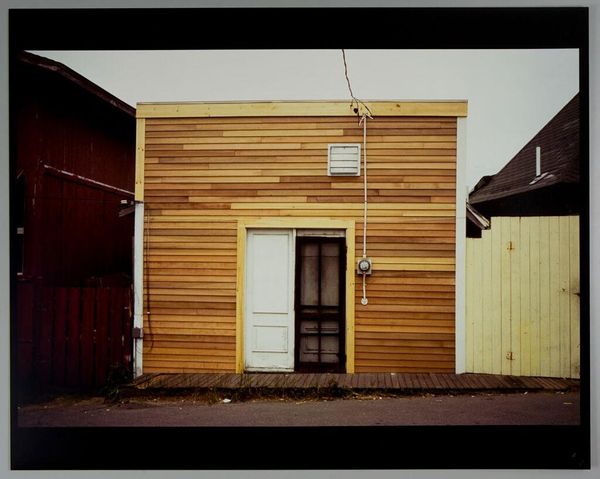
plein-air, photography
#
plein-air
#
landscape
#
street-photography
#
photography
#
cityscape
#
urban photography
#
realism
Dimensions: overall (image): 22.4 x 34.1 cm (8 13/16 x 13 7/16 in.) sheet: 26.67 x 36.51 cm (10 1/2 x 14 3/8 in.) mat: 40.64 x 50.8 cm (16 x 20 in.)
Copyright: National Gallery of Art: CC0 1.0
Editor: This photograph is called "Providence," taken in 1977 by Harry Callahan. It feels very much like looking into a hidden, private space, almost like a secret garden, even though it is clearly in an urban environment. What do you see in this piece? Curator: Indeed. We should first examine the arrangement of the structural components. Note how Callahan has meticulously framed the image. The interplay of horizontal lines – the siding of the houses, the fences – with the verticality of the buildings’ edges and the shadows, creates a complex geometric composition. How does the interplay of the planar surfaces create the illusion of depth in two dimensions? Editor: That's interesting. I was so focused on the “garden” aspect I hadn’t really considered how much geometry is at play here. Do the colors contribute to this sense of structure? Curator: Assuredly. Observe the muted tones—the blues, yellows, and greens, carefully balanced, which grant the image a sense of formal unity and underlying tonality. These relationships within the color palette augment the overall architectural geometry. Editor: So, even in what appears to be a simple snapshot of an everyday scene, the careful construction of lines, forms, and colours can reveal a much more considered design? Curator: Precisely. The visual architecture becomes the narrative itself, thereby transforming an unremarkable urban setting into an exercise in controlled form. This kind of precise formal manipulation helps us to really *see* rather than simply to look. Editor: That makes sense. I'll definitely pay closer attention to form in photography going forward! Curator: An increased sensitivity to how the visual field organizes itself is paramount in art appreciation.
Comments
No comments
Be the first to comment and join the conversation on the ultimate creative platform.
